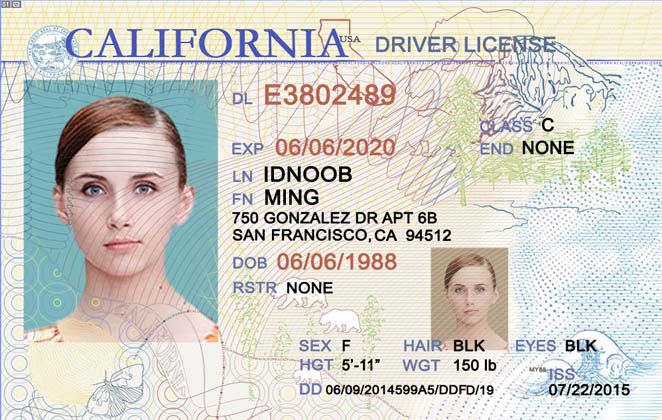In an effort to standardise drivers vision across Europe the European Commission introduced criteria for every country issuing California Fake driver’s license to adopt. The RSA in Ireland has partially embraced these recommendations. A summary is given at the bottom of this page. There are a number of medical aspects for drivers licensing in Europe. In order to receive your drivers licence you will need to pass an eye exam as well as a roadway test, and a theory test for first time applicants.
An eye sight report is part of your application but the criteria to pass this eye test has recently been made more stringent. Several studies and screenings were done throughout Europe to come to an understanding of the level of vision generally amongst drivers in all age groups. In a study commissioned by the Association nationale de l’amelioration de la vue (ASNAV), they were able to discover large-scale sight problems within France and their drivers. After testing 30,000 licensed drivers they discovered that 30% were unaware that they had minor sight defects and 5% were completely unaware that they had very poor site that would not allow them to drive.
Measuring eyesight for drivers involves several different important categories of vision. A positive result of Visual Acuity Screening is that it ensures that signs and other critical markings in the roadway environment (lane markings) would be adequately legible to most drivers. Thus a minimum level to driving in Ireland, with 2 functioning eyes, is 6/12 for Group 1 applicants (A1, A, B,EB, M or W) and 6/7.5 for Group 2 applicants (C1, C, EC1, EC, D1, D, ED1, ED), trucks, buses etc Contrast sensitivity refers to the amount of contrast a person needs in order to detect or identify an object or pattern in varying light levels.
Think of trying to read the eye chart through a fog. A fog that is getting more and more dense. A person who has poor contrast sensitivity requires a higher contrast to see objects or patterns from a person who has good contrast sensitivity i.e. they need a more stark black on white difference. Impairment of contrast sensitivity can result from a number of different eye and neurological conditions e.g. Cataracts, Macular Degeneration, Diabetic Retinopathy, Brain injury e.g. Stroke, Trauma or Tumour, Diplopia and uncorrected eye sight (refractive error).
The visual field measurement refers to ones entire spacial area of vision when fixation is stable and includes both central and peripheral vision. The size of a visual field is defined in terms of a visual angle. Group 1 applicants do not need to meet as strict or as large an angle as Group 2 applicant. For an adult with normal vision, when both eyes are open, the visual field extends horizontally about 180° to 200° of visual angle and vertically about 100°.
For each eye individually the horizontal field is about 160°. The visual field of one eye overlaps with that of the other eye to a very large degree although not totally. Visual fields are typically evaluated using a device called a Perimeter or Visual Field Screener. The Esterman or Henson 8000 visual field screeners are probably the most reliable and reproducible visual field tests. Impairment in the visual field can result from a number of different eye and neurological conditions including Glaucoma, Diabetic Retinopathy, Brain injury (Stroke, Trauma, Tumour).
Other factors need to be considered, in particular any progressive condition that is affecting the eyes or recent events that have had an impact on ones eye, truama, accidents etc. If this is the case more ongoing assessments are needed and a minimum period of 6 months to adapt to the new circumstances is required prior to re assessment. If you remain untested for these factors you could be potentially endangering other people on the road. Generally people are unaware that they have slight defects in their vision. The previous method of granting a licence to a 17 year old and not requiring another eyetest until he reached 70 years of age was blatantly flawed.
Because vision is so important to our lives and for driving you owe it to yourself and the other drivers on the road to maintain good vision throughout your life. Generally when you go for a licensing exam and you have been found to have a problem with your vision, you will immediately be prescribed glasses or referred for medical treatment. Where a correction is necessary to meet the standard (either with glasses or contact lenses) your licence is clearly stamped that this is the case. If you know that you have an existing vision problem or you are diagnosed with a degenerative vision problem, such as a progressive eye disease, you may be required to complete an eye test with each renewal of your license after your initial learners permit.


